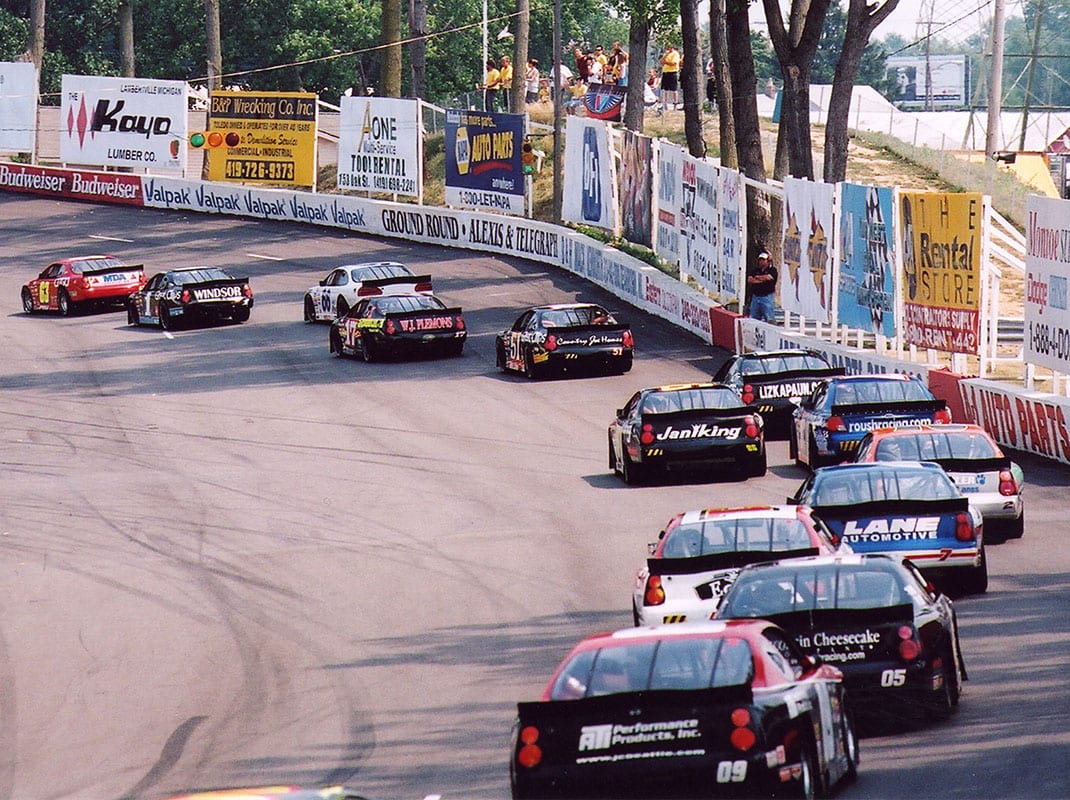This story first appeared in the October 2014 edition of SPEED SPORT Magazine.
It was built on grassroots principles of common rules, carefully planned scheduling and giving race fans what they crave — close racing, entertainment and compelling personalities.
From the beginning that’s what the American Speed Ass’n was all about. It grew from humble origins in Anderson, Ind., where series founder Rex Robbins began promoting sprint car races at Sun Valley Speedway — now Anderson Speedway — in 1968. By 1970, Robbins began turning his focus toward stock cars and he immediately discovered an opportunity.
Late model stock cars in the Midwest lacked organization and identity. Robbins broadened his efforts to offer races at nearby Winchester Speedway and on Oct. 4, 1970, presented the inaugural Dri-Powr 400. The 400-lap race changed the face of short-track racing, transforming the presentation of a stock car program from heat races and a 25-lap feature to a full-scale long-distance event.
The next great step came two years later at Salem (Ind.) Speedway. With input from Louisville promoter Milt Hartlauf, Robbins and longtime ASA employee and adviser Steve Stubbs hit upon a set of rules that allowed the cars of central and northern Indiana to compete with the larger “sportsman” cars of the Louisville region. On Nov. 5, 1972 the Midwest 300 attracted an enormous number of cars and fans, and Darrell Waltrip edged Larry Moore to win the event.
The ASA Circuit of Champions was born, and in 1973 Dave Sorg, of Fort Wayne, Ind., was crowned the first ASA “national” champion. The next few years saw ASA build a strong foundation, presenting a busy schedule of races at core tracks such as Sun Valley, Winchester, Salem, Louisville and Indianapolis Raceway Park.
In 1977, the series took a major step forward when six races were added at Missouri’s I-70 Speedway. ASA had now become a genuine “traveling” series, and Robbins soon introduced a winner’s circle program that offered incentives for teams and drivers who committed to running the entire schedule.
The next couple of years were dynamic for ASA. Key venues such as The Milwaukee Mile, Minnesota State Fair Speedway, Berlin Raceway and Canada’s Cayuga Speedway came on board, bringing further credibility and bolstering ASA’s footprint throughout the Midwest.
This period — the late 1970s — would prove crucial, particularly as it defined ASA’s role in short-track racing. The series now offered a home for regional racers who wanted to travel and also to up-and-coming drivers who hoped to eventually move to NASCAR racing.

Part of the success stemmed from Robbins’ philosophy that racing had to be entertaining and properly presented. The series offered dramatic pre-race ceremonies and driver introductions at every event and all races were required to finish under green-flag conditions. Robbins and his series proved to be highly influential as many of their ideas live on across every level of the sport.
In 1981, ASA partnered with the All Pro Racing Series to create the All American 400 at Nashville Speedway, an event that instantly reached epic proportions. It further cemented the dynamic of a central rules package among various regions and the race itself was an enormous success. Other high-profile venues also brought great exposure to the series, most notably several visits to Michigan Int’l Speedway.
By the 1980s, ASA had become a very dynamic property. Huge crowds poured through the gates at nearly every stop, drawn by the allure of watching some of the greatest drivers in short- track history.
Central among the players were three who held an enduring presence — Bob Senneker, Mike Eddy and Dick Trickle. Three distinct personalities, offering door-to-door racing and three dramatically different styles. In due course other names became ASA legends: Mark Martin, Butch Miller, Jim Sauter, Scott Hansen, Mike Garvey and Gary St. Amant, among others.
Martin was the vanguard of the incubating nature of ASA. The series was intensely competitive and if a young driver could earn his chops against Senneker and Eddy — et al — he might catch the attention of prominent NASCAR team owners. Others would eventually follow Martin through ASA and into NASCAR’s top series, including Rusty Wallace, Alan Kulwicki, Kenny Wallace, Johnny Benson Jr. and Jimmie Johnson.
Click below to keep reading.
